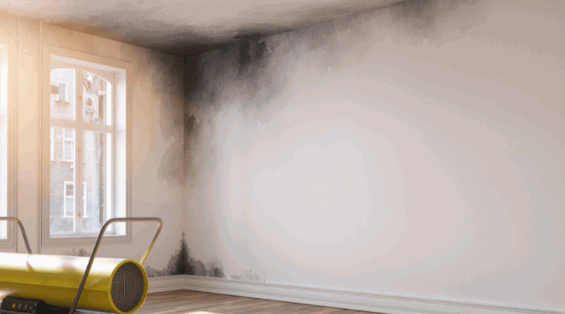
Smoke damage on painted walls can be a frustrating and unsightly problem for homeowners.
From assessing the extent of the damage to cleaning and removing stubborn stains, there are several steps you can take to restore your walls to their former glory.
In this article, we will explore the causes of smoke damage, different types of smoke damage, essential tools for assessment, cleaning steps, tips for removing stubborn stains, and preventive measures to avoid future damage.
Let's dive in and learn how to effectively clean smoke damage from painted walls.
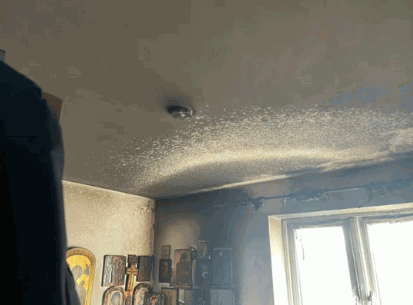
Table of Contents
Smoke damage on painted walls can be caused by various factors such as house fires, cigarette smoke, or even prolonged exposure to cooking fumes. The particles and residues in smoke can adhere to the surface of the walls, leading to discolouration, odour, and visible damage.
House fires are one of the most serious sources of smoke damage, leaving behind soot and ash that can penetrate deeply into the paint layers. On the other hand, cigarette smoke may slowly accumulate on walls over time, creating a sticky residue that is challenging to remove. Consistent exposure to cooking fumes can gradually form a greasy film on the walls, altering their appearance.
When smoke particles interact with painted walls, they chemically react with the surface, causing discolouration and staining. The porous nature of paint allows the smoke residues to seep into the material, making it difficult to completely eliminate the damage. Proper cleaning and restoration techniques are necessary to address these issues effectively.
Learn more: What Is Fogging
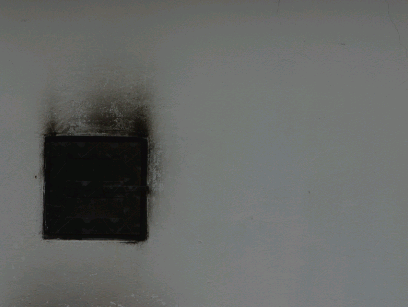
Assessing the extent of smoke damage on painted walls is crucial to determine the appropriate restoration process.
This involves inspecting the walls for discolouration, soot deposits, and any signs of water damage if the walls were exposed to firefighting efforts. A thorough assessment plays a critical role in identifying the different types of damage, such as surface stains, peeling paint, or even structural weakening due to prolonged exposure to smoke. By carefully examining these indicators, professionals can tailor their restoration techniques to address each specific issue with precision and efficiency.
To accurately assess smoke damage on painted walls, you may require tools such as torches for proper illumination, moisture meters to detect hidden water damage, cleaning cloths for initial testing, and even protective gear like gloves and masks to ensure safety during the inspection.
Another essential tool to have is an infrared camera, which helps in identifying temperature variations that indicate areas of concern. A portable air quality monitor can be used to assess the extent of smoke particles in the air, providing valuable insights into the overall air quality of the affected space.
Documentation forms are crucial for recording observations, measurements, and findings throughout the assessment process, ensuring a systematic approach and thorough evaluation of the smoke damage. An odour detector is critical for identifying any lingering smoke odours that may require specific treatment to eliminate effectively.
Smoke damage can manifest in various forms, including wet smoke damage, dry smoke damage, and protein smoke damage. Each type presents unique challenges in terms of cleaning and restoration due to differences in residue composition and the severity of the damage.
Wet smoke damage is characterised by a sticky residue that smears easily, leaving behind a strong odour and discolouration. On the other hand, dry smoke damage results in a powdery residue that can be challenging to clean without smudging. Protein smoke damage, often caused by kitchen fires, leaves behind a strong, pungent odour that can be particularly stubborn to eliminate.
Wet smoke damage results from smouldering fires that burn at lower temperatures, producing sticky, smeary residues that can spread extensively on painted walls. The residue from wet smoke damage often has a strong odour and requires specialised cleaning methods for effective removal.
This type of smoke damage can be particularly challenging to address due to the stubborn nature of the residues that adhere tightly to surfaces. In terms of cleaning walls affected by wet smoke, traditional methods may not be sufficient, as regular cleaning agents may struggle to break down and remove the sticky residue effectively. Professional restoration technicians often utilise advanced cleaning techniques and specialised equipment to tackle these resilient residues, ensuring thorough removal and restoration of the affected areas.
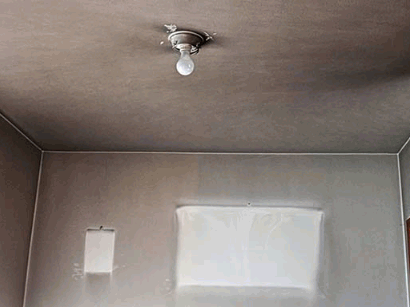
Dry smoke damage occurs when fast-burning fires generate high heat, leading to powdery residues that can be easier to clean off painted walls compared to wet smoke residues. Dry smoke damage can still discolour surfaces and necessitate thorough cleaning to restore the walls.
One key characteristic of dry smoke damage is the fine, powdery residue that it leaves behind on surfaces, including painted walls. This type of residue requires specific cleaning methods due to its composition and texture. Unlike wet smoke residues, dry smoke residues do not smear when touched, but they can still discolour surfaces and require careful attention during cleaning.
To effectively address dry smoke damage on painted walls, dry cleaning methods such as vacuuming with brushes or wiping with dry sponges are commonly used. These methods help remove the powdery residue without spreading it further or causing more damage.
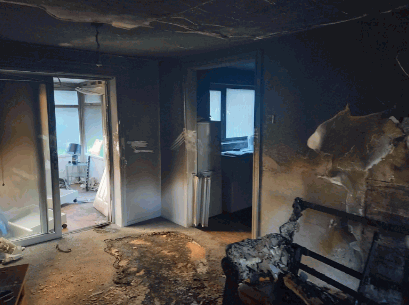
Protein smoke damage typically results from kitchen fires and leaves behind nearly invisible, pungent residues on painted walls. Whilst the residues may not be as visually apparent, the odour can be strong and persistent, requiring specialised cleaning approaches to eliminate both the residue and the smell.
Unlike typical smoke damage caused by fires, protein smoke damage stems specifically from the burning of organic materials such as meat, oils, and other food products. This type of smoke residue tends to cling strongly to surfaces, including walls, creating a stubborn layer that ordinary cleaning methods might not effectively remove.
The challenge with protein smoke damage lies in its deceptive nature; whilst the walls may look relatively unaffected, the accompanying smell can be overwhelming. This dual issue demands a thorough and meticulous cleaning process to address both the visual and olfactory impact effectively.
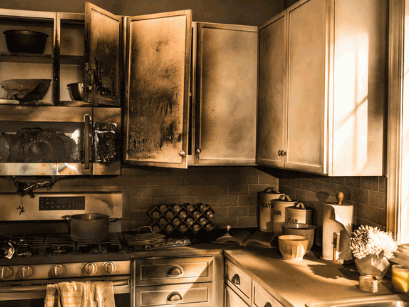
Cleaning smoke damage on painted walls requires a systematic approach to ensure thorough restoration. The process typically involves steps such as ventilating the area, protecting yourself with appropriate gear, removing loose soot and debris, cleaning the walls using suitable agents, rinsing and drying the walls, and repainting if necessary for a complete restoration.
To begin, open windows and use fans to ventilate the room. This helps in dissipating the smoke odor and improving air quality. Ensure you wear gloves, a mask, and protective eyewear to shield yourself from harmful particles. Use a vacuum cleaner with a brush attachment to gently remove loose soot and debris from the walls.
Next, mix a solution of warm water and mild detergent in a bucket. Use a sponge to clean the walls gently, starting from the bottom and working your way up. Pay extra attention to heavily stained areas and use a soft-bristled brush if needed.
After cleaning, rinse the walls with clean water and allow them to air dry. This step is crucial to prevent any residue from causing further damage. If the smoke damage is extensive and the walls remain discolored, consider repainting them to achieve a fresh look.
The first step in cleaning smoke damage on painted walls is to ventilate the affected area thoroughly by opening windows, using fans, or employing air purifiers. Proper ventilation helps in dissipating lingering odours and improving air quality during the restoration process.
Effective ventilation is imperative as it helps in removing harmful pollutants and chemicals released by the fire. Proper airflow also aids in drying out the walls and surfaces faster, preventing mould growth. It is recommended to create a cross breeze by opening windows on opposite sides of the room. Using box fans to push out stale air and bring in fresh air can accelerate the process. Air purifiers with HEPA filters can further help in capturing fine particles and improving indoor air quality.
Prioritise safety by protecting yourself before starting the cleaning process for smoke-damaged painted walls. Wear appropriate personal protective equipment such as gloves, masks, and goggles to shield yourself from harmful residues and airborne particles while handling the restoration tasks.
It is crucial to ensure proper ventilation in the work area to minimise exposure to lingering smoke odours. Properly sealing off the affected area with plastic sheeting can help contain contaminants and prevent them from spreading to unaffected areas of the home.
Regular breaks are essential to prevent fatigue and maintain focus during the clean-up process. By following these precautions, individuals can create a safer working environment while restoring smoke-damaged walls effectively.
Begin the cleaning process by gently removing loose soot and debris from the painted walls using a vacuum cleaner with a brush attachment or dry cleaning sponges. Carefully eliminate the initial layers of residues to prepare the walls for deeper cleaning and restoration.
Removing loose soot and debris is a crucial first step as it lays the foundation for a thorough cleaning process. By effectively clearing away surface dirt, you create a clean canvas for subsequent treatments, ensuring better results overall. This initial clean-up not only enhances the effectiveness of deeper cleaning methods but also prevents particles from adhering more firmly to the walls over time.
Proper techniques involve delicately running the vacuum cleaner or dry cleaning sponge across the walls, and applying gentle pressure to lift off the loose particles without damaging the underlying surface. Effectively removing these initial layers is key to achieving a polished finish.
Next, clean the smoke-damaged painted walls using appropriate cleaning solutions such as trisodium phosphate (TSP), white vinegar, or commercial products designed for smoke damage restoration. Follow the manufacturer's instructions for application and ensure thorough coverage to remove residues effectively.
Before applying any cleaning solution, it's crucial to test a small, inconspicuous area of the wall to ensure the solution won't damage the paint further. Once you've confirmed the suitability of the cleaning agent, start by gently wiping the walls with a sponge or cloth soaked in the solution. Focus on areas with heavy smoke stains and work methodically from top to bottom. Rinse the walls with clean water and allow them to dry completely before assessing if further cleaning is necessary.
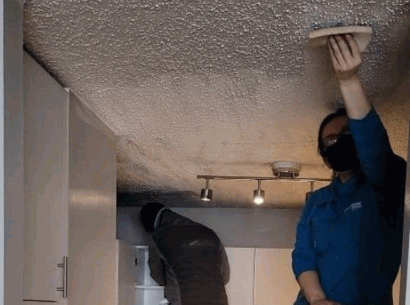
After cleaning the smoke-damaged painted walls, rinse the surfaces with clean water to remove any residual cleaning agents or residues. Once rinsed, dry the walls thoroughly using fans, dehumidifiers, or natural ventilation to prevent moisture buildup and mould growth.
Properly rinsing and drying the walls is critical to ensure the removal of any remaining contaminants and to enhance the effectiveness of the cleaning process. Moisture control plays a key role in preventing further damage and maintaining indoor air quality.
Moisture control is essential to inhibit mould formation and to create a healthier living environment. When drying, focus on promoting air circulation to accelerate the evaporation process and minimise the risk of water seepage into the wall materials.
Consider using a combination of methods such as fans and dehumidifiers to expedite the drying process, especially in areas with limited airflow.
In cases where smoke damage has severely affected the painted walls, repainting may be necessary to restore the aesthetics and integrity of the surfaces. Select high-quality, low-VOC paint that helps seal in any remaining odours and provides a fresh finish to the walls post-restoration.
Considering the extent of the smoke damage, it is crucial to assess the condition of the walls before proceeding with the repainting process. The severity of the damage can vary from superficial discolouration to deep-seated stains, requiring different levels of surface preparation and restoration. Proper ventilation and safety measures must be in place during repainting to ensure a healthy environment. Repainting not only enhances the visual appeal of the walls but also plays a vital role in eliminating any lingering smoke odour, contributing significantly to the overall restoration outcome.
Stubborn smoke stains on painted walls can be challenging to remove, but certain tips and techniques can help in effectively tackling them. From using degreasers and vinegar solutions to employing baking soda as a gentle abrasive, exploring different methods can aid in breaking down and eliminating persistent smoke residues.
It is crucial to start by cleaning the surface with mild detergent and water to remove surface dirt before targeting the smoke stains directly. For greasy residues, try using washing-up liquid or a mild household cleaner to cut through the oily layers effectively. Consider mixing a mixture of ammonia and water for tough stains, but always ensure proper ventilation and wear protective gear when working with harsh cleaning agents.
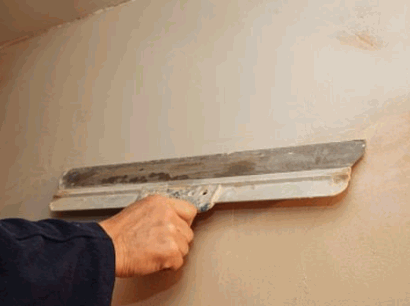
When dealing with stubborn smoke stains on painted walls, utilising a degreaser can be highly effective in breaking down greasy residues and adhesive particles. Apply the degreaser as directed, allow it to sit for an appropriate dwell time, and then gently scrub the stained areas for optimal results.
Apart from effectively tackling smoke stains, degreasers have the added benefit of being versatile cleaners that can be used on a variety of surfaces, including countertops, cabinets, and appliances.
When applying a degreaser, it is essential to follow the manufacturer's instructions carefully to ensure proper dilution and application methods. This will help maximise the degreaser's cleaning power while protecting the painted walls from damage.
To enhance the effectiveness of the degreaser, consider pre-treating the smoke stains by gently wiping off any loose debris before applying the solution. This can help the degreaser penetrate deeper for a more thorough cleaning.
Using a vinegar solution is a natural and cost-effective approach to combating stubborn smoke stains on painted walls. The acidic properties of vinegar help break down residues and neutralise odours, making it a versatile and eco-friendly cleaning option for restoring walls affected by smoke damage.
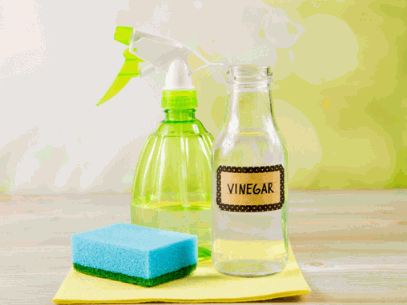
Bicarbonate of soda serves as a gentle abrasive that can help to lift stubborn smoke stains from painted walls without causing damage to the surfaces.
To create a paste for smoke stain removal, mix bicarbonate of soda with water until you achieve a thick consistency. Apply the paste generously onto the affected areas of the painted walls, ensuring full coverage over the stains. Let the mixture sit for around 15-20 minutes to allow the bicarbonate of soda to penetrate the smoke residues.
After the waiting period, use a soft-bristled brush or sponge to gently scrub the walls in a circular motion. The mild abrasiveness of the bicarbonate of soda helps in breaking down the stains without scratching the paint. For tougher stains, you can add a small amount of vinegar to the paste for added cleaning power without compromising the surface.
After scrubbing, wipe the walls with a damp cloth to remove the residue, revealing clean and refreshed surfaces. When using bicarbonate of soda as a cleaning agent, it is essential to test a small, inconspicuous area first to ensure compatibility with the paint finish.
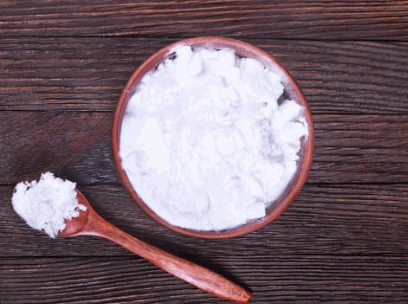
Preventing smoke damage on painted walls involves implementing proactive measures to minimise exposure to smoke-inducing factors and maintain a healthy indoor environment. From installing smoke detectors and ensuring proper ventilation to avoiding smoking indoors, adopting preventive strategies can significantly reduce the risk of smoke damage and preserve the integrity of painted walls.
Regularly cleaning and dusting painted surfaces can also help in preventing smoke particles from settling onto walls and causing discoloration over time. Additionally, maintaining a smoke-free environment by establishing designated smoking areas outside the house can prevent the accumulation of smoke residue indoors. Using air purifiers with HEPA filters can further improve indoor air quality by capturing airborne smoke particles, thus safeguarding painted walls from potential damage.
An essential preventive measure against smoke damage on painted walls is installing smoke detectors in strategic locations throughout the property. Smoke detectors serve as early warning systems, alerting occupants to potential fire hazards and enabling timely intervention to mitigate the risk of extensive smoke damage.
Proper placement of smoke detectors is crucial for their effectiveness. It is recommended to install smoke detectors on every level of the home, including inside bedrooms and near common fire hazard areas like kitchens. Regular maintenance is key to ensuring smoke detectors function optimally - testing them monthly, changing batteries at least once a year, and replacing units every 10 years.
Early detection provided by smoke detectors can be a lifesaver in fire emergencies. The rapid alert they offer can protect lives, minimise property damage, and provide the precious time needed to safely evacuate the premises or extinguish the fire.
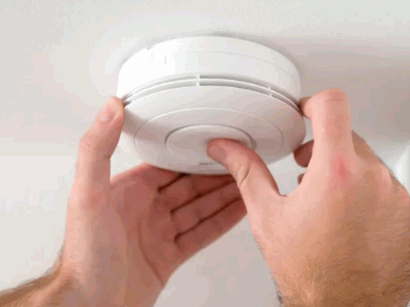
Effective ventilation plays a vital role in preventing smoke damage on painted walls by promoting airflow, reducing indoor pollutants, and improving overall air quality. Ensure proper ventilation in all living spaces, including kitchens and bathrooms, to minimise the accumulation of smoke residues and maintain a healthy indoor environment.
One of the key benefits of a well-ventilated home is the efficient removal of harmful pollutants such as smoke particles and volatile organic compounds, safeguarding the health of occupants and preventing long-term damage to the interior surfaces. Optimizing your ventilation systems through regular maintenance, cleaning filters, and ensuring proper airflow distribution can significantly enhance the effectiveness of smoke residue mitigation efforts.
Incorporating natural ventilation methods like opening windows or using exhaust fans can help in expelling lingering smoke odors and preventing them from seeping into walls or furniture. Establishing cross ventilation by strategically placing fans or vents can create a continuous flow of fresh air, reducing the chances of smoke residue settling on surfaces.
A simple yet effective preventive measure to protect painted walls from smoke damage is to avoid smoking indoors altogether.
By implementing a strict no-smoking policy within indoor spaces, you create a healthier environment for everyone. Not only does this safeguard against smoke damage to walls and furnishings, but it also promotes better air quality, reducing the risk of respiratory issues for occupants. Establishing smoke-free environments can enhance the overall aesthetic appeal of the space, maintaining a fresh and clean atmosphere. Businesses and public establishments can benefit from implementing smoke-free policies to cater to a wider clientele who value smoke-free environments.